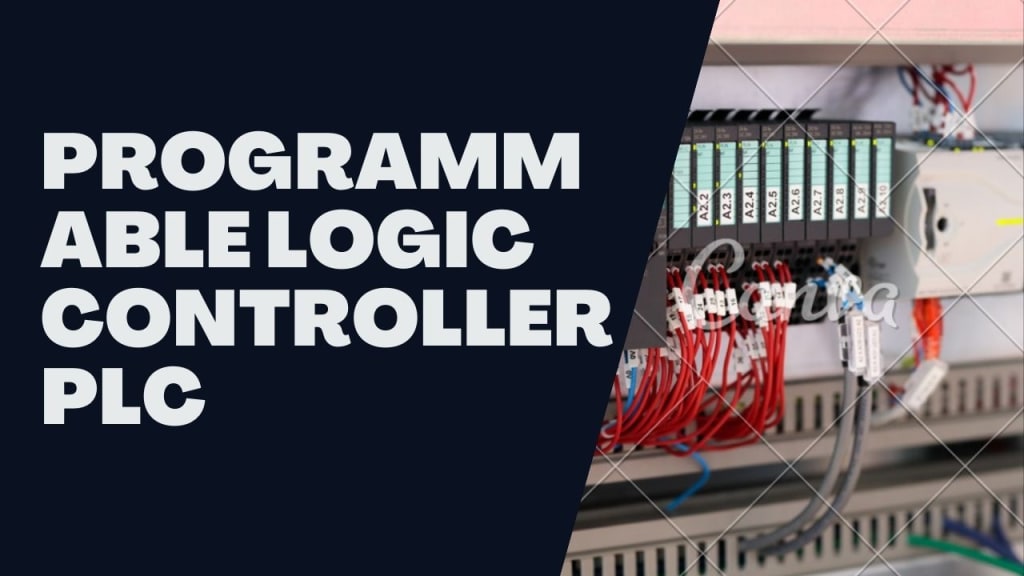
Programmable Logic Controller PLC Definition, Working, Scan Cycle, Application
PLC means Programmable logic controllers are a modern computer device or digital computer used for the industrial controlling system. Due to its robust construction, outstanding functional features like machinery on factory assembly lines, control of amusement rides, or control of lighting fixtures, Simplicity in programming and Hardware usage, this PLC is used as digital computers in all industries also for purpose of controlling system. So if have a problem in logic and working related to PLC, read this tutorial Programmable Logic Controller PLC Definition, Working, Scan Cycle, Application.
Mostly industries declare abbreviate this device like PC. Because of its exceptional functional features like digital computers.
PLC application is not only limited only for industrial purposes also it is applicable in civil applications like in washing machines, traffic signal control, and elevator work. It is used in commercial and industrial applications. There are many types of PLC available in today’s market. That PLC types its application and principles are discussed in the below paragraphs.
Modules In PLCs
Three modules in PLCs which are the following
- CPU Module
- Power Supply Module
- Input and Output Module
CPU Module
This is a module that comprises of the central processor and its memory which is the main module in PLC. The function of the processor is to execute all the basics computation and processing of data by accepting the input and creating the required output. The memory of the processor is used to memorize all basics computation.
To insert the program in the CPU module we need programming devices such as a laptop or PC. Another we need a user interface also called HMI to insert parameters or data in PLC with changing programs.
Also read: What is Supply chain management? Different types and also read another article: The difference between NC And CNC
Power Supply Module:
The power supply module is normally an internal module. This module is responsible to supply the required power for the whole system also needed to convert AC power to DC power for CPU and input and output module.
I/O Modules:
As the name suggests that the input and output module of PLC are responsible to connect the actuators and sensors to the PLC system to sense various external parameters such as pressure, temperature, flow, etc. The input and output module may be digital or analog.
Scan Cycle of PLC
PLCs is run by continuously scanning and repeating program much time in seconds. Initially when PLCs start it check for fault in the program through hardware and software is called self-test.
PLC Scan Cycle
If there is no fault in the program then PLC starts the scanning process. This process consists of three steps
- Input scan
- Executing programs
- Output scan
Input Scan:
A PLC scan initiates with the CPU reading and this is the status of inputs. A simple way is a PLC take a snapshot of the input and solve the logic also save all information for the next step. This makes the process faster.
Executing program
In this scanning process, PLCs execute the program at a time using only the input ladder logic program. The application program is completed using the status of the inputs.
Output Scan
Once the program is completed, the CPU makes internal diagnostics and communication tasks. The scan cycle of PLC ends by updating the outputs, then starts over. The cycle time depends on the size of the program, the number of inputs and outputs, and the amount of communication required.
Advantages of PLC
- PLCs are secure for severe external conditions (dust, moisture, heat, cold, etc)
- Controlling complex at less cost.
- Flexible enough that can be reused to control other systems quickly and easily.
- Computational abilities allow more advanced and complex control.
- Comprises of reliable components make these likely to operate for years before failure.
Disadvantages of PLC
- Too much work required in connecting wires.
- Show difficulty with changes or replacements.
- Show difficulty in finding errors; requiring a skillful workforce.
Application of PLC
PLCs Application is in all industries for such a monitoring and controlling purpose. Here is some application of PLCs application.
Example of Use: In the Glass Industry
In glass industries, Programmable Logic Controllers are applicable in the workshop and every procedure for controlling the processing of flat glasses and material ratio, etc.
With the development of Programmable logic controllers and increasing demand in the real world, the control mode of the programmable logic controller with an intelligent device is applied in the glass industry.
As the PLC is developed in the real world, the control mode is applied in glass industries with some intelligent devices. Hence, it drastically increases the demand for PLC and become more applicable in industrial controlling system.
While manufacturing of float glasses, only PLC cannot execute all-controlling system tasks because of the complexity of the control system and the enormous amount of data processing.
Example of PLC: Paper Industry
PLCs is mostly applicable in the Paper industry like controlling various process and machines that produce the paper product at fast speed. In offset, web printing PLC is applicable to control and monitor the production of books and newspapers.
I hope this helps.
Read more articles on Vocal:
About the Creator
Khan John
I write about NSFW AI Scene and everything that is happening in the AI NSFW including recent developments. Contact me : Twitter, or an email at: [email protected]






Comments
Khan John is not accepting comments at the moment
Want to show your support? Send them a one-off tip.